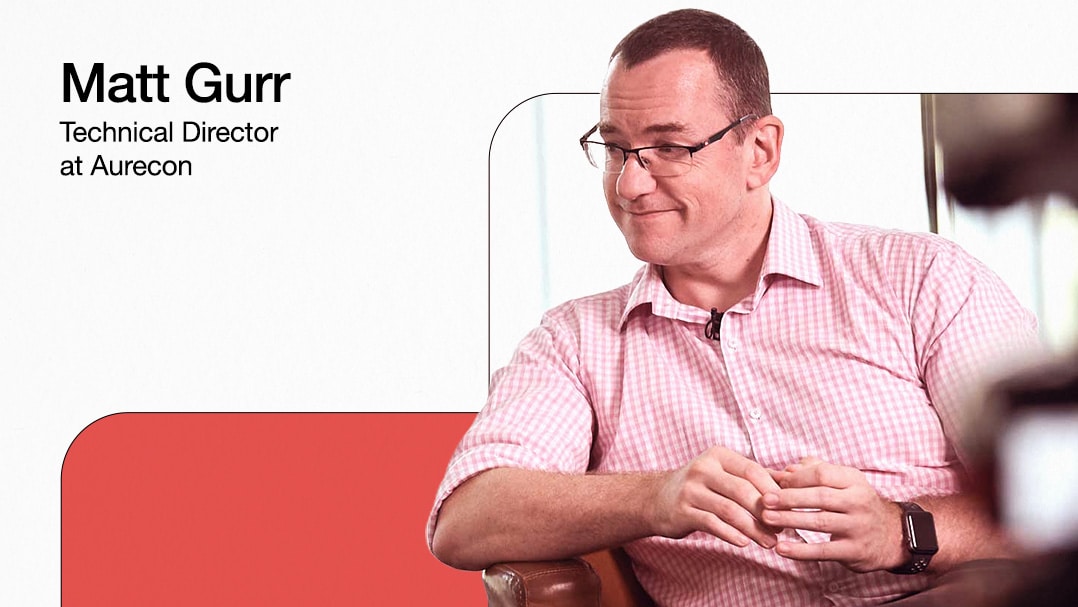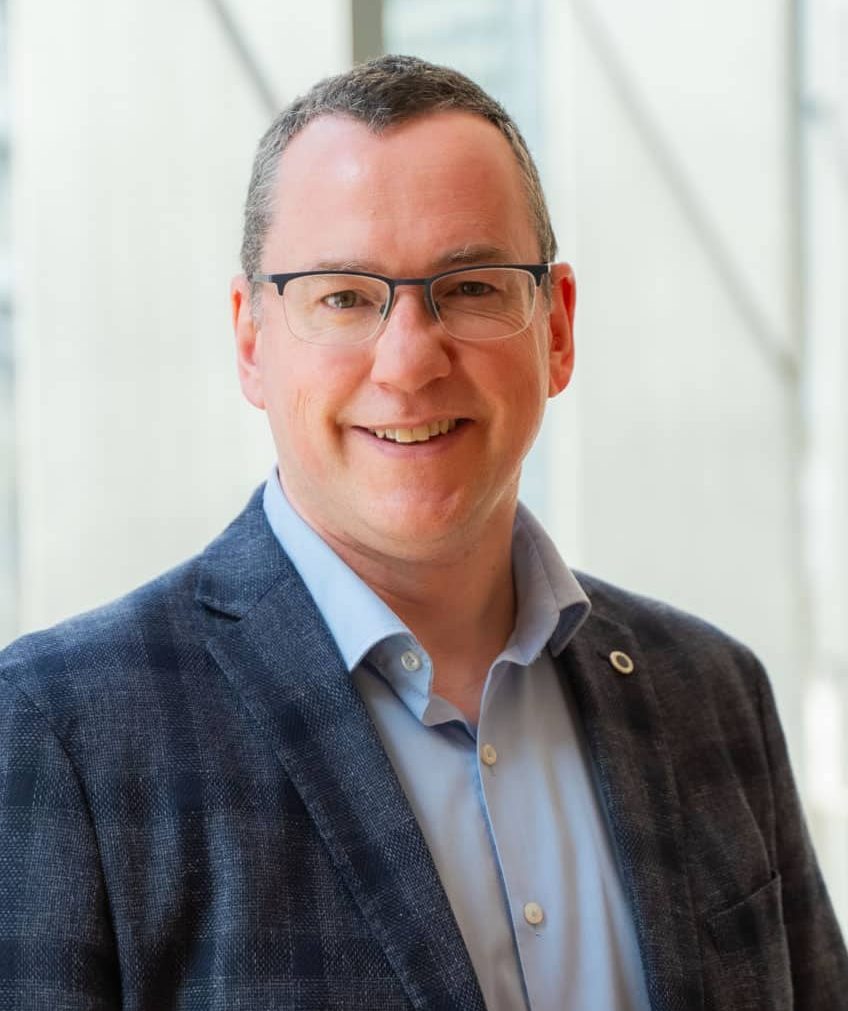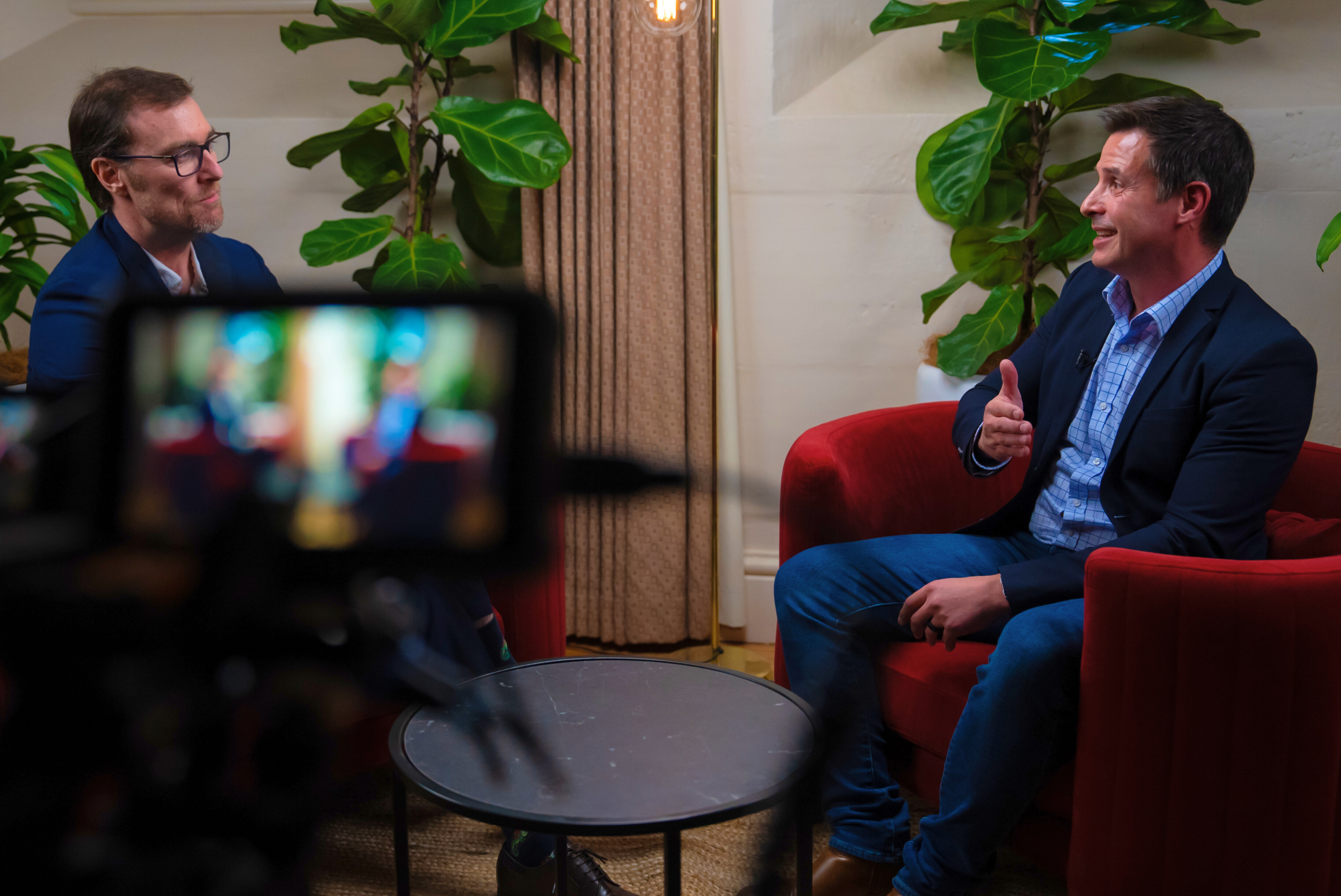Increasingly, data centres are being built to balance maximising facility capacity and incorporating equipment for uptime and efficiency. But Matt Gurr is introducing a new era that focuses on the user experience: human-centred design. Sitting down at ADAPT’s CCDC Edge with Senior Director of Advisory Services, Anthony Saba, the two find the new crux of tomorrow’s data centres.
Anthony Saba:
You presented on a few really interesting topics. The first one is around how you’ve taken this concept and approach to think of ‘human-centred design’, and applied it in a non-traditional way to data centres, and how that’s changed the way that you are approaching the data centre conversation. I would love to hear your thoughts on exactly what you’ve done there.
Matt Gurr:
Human-centred design isn’t something we should naturally think of as a bid for life for data centres. Traditionally data centres have always been very, very technically heavy. Technical infrastructure projects we’re more worried about reliability, maintaining efficiency, driving down power consumption, and the place of people within that space has always been relegated to one of a nuisance.
Over the last ten years we’ve been working really really hard to try and engineer people out of the space. If you look at some of the figures and some of the facts that we have around the causes of outages, within data centres there’s still a very, very consistent and heavy amount of outages that are actually still caused by human error. So, I’m starting to look at it and we’re really wondering, are we actually hitting the limits of what we can actually do with automation in the data centre spaces and should we actually be looking back at those facilities and actually trying to work out are we actually making them hostile for people.
We’re expecting people to come in to perform at their very very best but we’re actually not giving them the best chance of actually doing that by making a space for them which is not really a good place for people to be in. So, what I wanted to really start doing was bringing in some principles from other areas, so particularly things like commercial buildings where we’re actually taking a lot of effort and a lot of time to optimize how that space performs for people and improve their functionality, and there’s some pretty startling statistics around it.
There’s about 26% cognitive increase from people working in a really sort of high-end green building, and the actual performance increases they get, and particularly around crisis response as well, there’s a really sort of sharp peak in people’s ability to respond to crisis, when you’re in a higher performing building. So, while there is no direct map across from a commercial building to a data centre, some of the things that we actually have in there are some fairly simple ways to try and help people improve what they’re actually doing.
What I really want to start to do is to look at the different roles we have in a data centre, start to actually bring in a human-centric design approach to it, and actually understand where are the pain points that those people are going through every day, and to really sort of step back and go, okay, well these are the things that we can fix. They’re not expensive. They don’t affect the critical infrastructure. They’re not going to cause us to take the data centre down or change any of the major elements of what we’re actually doing, but they might actually help us to reduce that error rate from people’s involvement.
Let’s boost them, let’s give them the best chance they can to be optimal performing people and let’s welcome them back in to the data centre and actually make that space somewhere they can actually be, somewhere they can work and somewhere they can actually get a really good shot of doing their job well.
Anthony Saba:
And there’s a learning curve involved in that, how far along in the journey are you? How long have you guys spent, you know, understanding the people, building these personas and then thinking about how you can evolve these environments for them?
Matt Gurr:
What we basically do is we start off and we try and build as many different personas as we can around the different roles that we’re aware of. So, yesterday I talked about a couple of UPS takes, which is just again one very small subset of the people who come in and out of the data centre everyday. We start looking at things like the FMs as well, particularly in people that are spending the most time in there and the ones that are going to benefit the most.
They’re the ones that we start with. And then from that point onwards we’ll progress on to interviews, and actually start talking to the FMs and seeing whether the personas that we’ve built up around this from that human-centric design approach, whether they’re actually realistic, whether they’re real and the things we’re actually coming up with are representative of what’s actually happening in a typical tax day for example.
Anthony Saba:
Excellent, and it’s exciting to see, I mean you mention in the building side of things, there’s 20% increase in cognitive, it would be an interesting transitional translation to how it goes in the data centre as well. Have you started to see those results as of yet? Or is it still early days?
Matt Gurr:
No, this is still very early days. We’ve been doing human-centric design in the built environment space for a few years now. Staring to transition of how we actually look at it for a number of different problems, but it’s always been a solution that is very, very sort of people focused. So it works really well for things like transport hubs, where you’ve got a lot of people coming in and out of space, and you’re trying to understand how they use it. It works very well for things like commercial buildings. And again where they’re really sort of typically human heavy places, and it’s taken me a few years to really sort of look through this and to actually start to realize that it’s still applicable to a data centre even though it’s still so technically heavy. There’s still a place for people to be in there. If we can really sort of get our heads around this and improve things, then hopefully we can make an impact on how that data centre actually responds as well.
Anthony Saba:
Fantastic, another question. It’s the energy efficiency challenge I should say because it is a huge challenge to the industry and there was a few really interesting points that have come up over the past kind of two days around energy efficiency not just being a solely financial decision that we do to drive down costs, it has moved far beyond that. There’s an ethical aspect to it, there’s a moral aspect to it. I’m really keen to get your thoughts and insights on some of the work you’re doing in this space from that perspective.
Matt Gurr:
One of the things I’ve been really impressed by over the last couple of days, especially hearing a lot of the data centre leads on there, is they’re actually starting to talk about things more than just purely the financial. They really are taking the moral imperative aboard to try and improve things. And I think as data centres grow and we’re starting to see the size and scale of all of these facilities. They’re becoming massive industrial users of power. A lot of them are actually embedded deeply into sort of typical residential neighborhoods, commercial areas, and they’re in places where they can actually impact people’s lives quite substantially.
The moral imperative here is really to step back, look at how we’re actually impacting people around us again. So it comes back to people. Always comes back to people on these things and actually take some leadership on this one as well. One thing that I think if we don’t take that leadership ourselves, then it’s the kind of thing that ends up getting imposed on us. And when it typically gets imposed, honestly it doesn’t happen well. Government steps in, it doesn’t do the best job on things. It tries to understand as well as it can. They’ll never understand as deeply as we can from those of us who are in the industry. So if we start to drive things, pick up that moral imperative that we want to actually make things better, we want to reduce power consumption we want to improve efficiency, then we can actually start to drive some of those things home.
We’ve seen it before when the green grid was formed, we had a massive industry shift around efficiency and the PUE’s of facilities and we put a lot of focus on things. And it’s good to see that starting to come back into the overall energy question again as well now, so I’m really looking forward to seeing how that shifts over the next couple of years, and whether we can really start to have an impact on the energy usage of our industry as a whole.
Anthony Saba:
Are you finding that government is starting to lean more and more on the subject matter experts in this space because it is a larger challenge and often governments, they tend to be barriers in these sorts of situations? Are you finding those walls being broken down and have you started to have those conversations more and more?
Matt Gurr:
I think government are just starting to get involved in things now. I think they’re being very tentative around this space at the moment, which is good, because it basically gives us this chance as an industry to actually step back and actually start to do something ourselves first. If government start to make a few stirrings that they’re considering issues and problems around this, then A it raises awareness of it at a higher levels of government so we can start to get a little bit more support around it, which is great, but it also allows us to step back and take our own destiny in our hands again and to actually start to change things ourselves before we have some kind of a heavy handed approach on there which will maybe not be the best solution or outcome for us as an industry.
Anthony Saba:
Two words, I’m not going to frame this question, I’m not going to ask it, I just want to get your thoughts on ‘Power Availability’. It’s a huge challenge for the industry, for everyone. We’ve seen it globally, locally, what are your thoughts on power availability and what it means to this ecosystem and this community?
Matt Gurr:
The biggest challenge I think we’re going to have over the next two years is going to be around availability of power to facilities. It’s not appearing on too many people’s radars yet, and we were looking at some of the information that was coming through from the analysts particularly around what everybody’s challenges are and what they think are going to be their big issue.
I think they’re actually missing out here and on the fact that power availability, particularly for those that are building new facilities, is going to be a massive issue for us. I’m down in Sydney at the moment and we’re starting to see some huge issues there around availability of power and infrastructure.
As these facilities are getting bigger and bigger, every time we do a job it increases by another massive scale. I mean were upwards of a 100, 150 megawatt facilities now whereas two or three years ago, we were still talking about 10, 15 megawatts. So the scale of increase in the size of the facilities that we’re building is just increasing exponentially and the demands that’s actually placing onto our authorities and supply authorities to actually provide that power into the neighborhoods and locations that we’re after it’s going to be a real challenge.
Anthony Saba:
Are the warning lights going off? Are people aware that this is going to lead to potential mass scale outages that shutdown systems, critical systems as well, these are not soft things to talk about. How do we approach that before it’s to the point where we can’t actually deal with some of these are challenges?
Matt Gurr:
The big issue is that there’s still a massive discussion to be had on a national level, particularly around how we deal with power and all the energy markets things as well. But I think as an industry, data centres being such major users industrial level users of power, I think we actually should have a voice at the table when we start talking about this.
We’re going to be increasing the large users of power. I think there was some figures I think from Greenpeace a couple of years ago that basically said we were using about 10% to 13% of all global power produced as an industry, which is absolutely huge. And as I say, we’re looking at hyperscale here, we’re looking at all the big international players, all of the cloud providers, they’re all growing massively they’re growing rapidly. So that figures just only going to increase.
Power for the data centre industry is going to become a massive problem at some point soon and I think as an industry we need to grab a hold of that and we need to get engaging and start talking to the government about how we actually deal with this and it should be proactive and on the front foot with them and talking and shaping how that that forward path goes.
How can people in the data centre actually improve operational performance? Read Aurecon’s article on creating a data centre environment that support employee productivity. It features our very own Senior Director of Advisory Services Anthony Saba sitting down with Technical Director Matt Gurr at Connected Cloud & DC Edge.





























